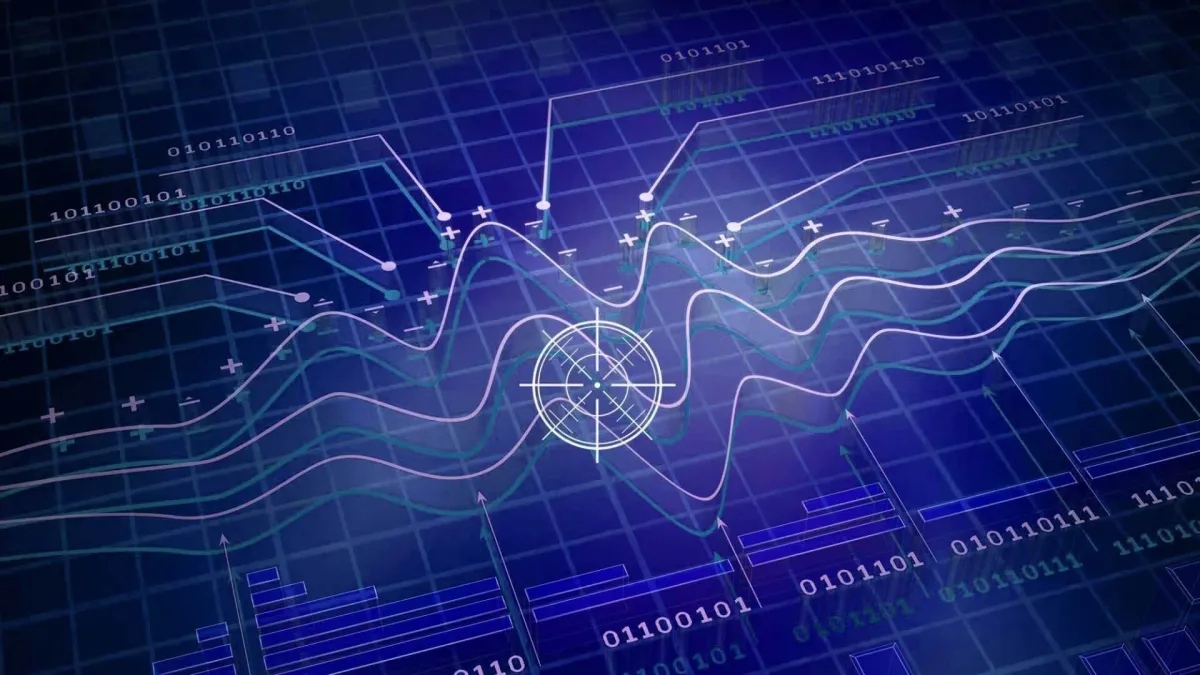Digital Signal Processing (DSP) is one of the most significant technological advancements of the modern era, forming the backbone of nearly every digital communication, multimedia system, and intelligent device. It is the science and engineering discipline that deals with the representation, transformation, and manipulation of signals in digital form. Whether it is the clear sound of music streaming services, the crisp visuals in high-definition video, or the intelligent analysis of biomedical data, DSP is at the heart of these technologies. It provides the mathematical and computational framework necessary to process information in real time with accuracy, efficiency, and flexibility.
DSP merges the theoretical foundations of mathematics and physics with practical aspects of computer science and electrical engineering. It has revolutionized the way we acquire, store, analyze, and transmit information. By converting analog signals—such as sound, light, and motion—into digital form, DSP enables complex operations that would be impossible or inefficient in the analog domain. Understanding DSP, therefore, is essential to grasping how modern audio, video, and communication systems function and evolve.
The Nature of Signals and Systems
At the most fundamental level, a signal is any physical quantity that varies with time, space, or another independent variable and carries information. Examples include audio signals representing variations in air pressure, electrical signals in communication channels, and video signals representing variations in light intensity across space and time. A system, in this context, is a process or device that modifies or analyzes these signals to achieve a desired outcome, such as filtering noise, compressing data, or extracting meaningful features.
In digital signal processing, signals are represented as sequences of discrete numerical values. This discretization involves sampling and quantization. Sampling converts a continuous-time signal into a discrete-time signal by measuring its value at uniform time intervals. Quantization, on the other hand, maps these sampled values into finite numerical levels, enabling their representation in binary form for digital computation. Together, these processes transform analog signals into a format that can be efficiently stored, transmitted, and manipulated using digital electronics.
The Transition from Analog to Digital Processing
Before the advent of digital technology, signal processing was primarily analog. Analog systems used continuous electrical circuits—consisting of resistors, capacitors, inductors, and amplifiers—to perform filtering, modulation, and other operations. While effective, analog systems were limited by component tolerances, noise susceptibility, and lack of reconfigurability.
The transition to digital signal processing emerged with advances in microprocessors, digital storage, and high-speed analog-to-digital converters (ADCs). Digital systems offered several advantages: precision, flexibility, reproducibility, and resilience to noise. Once a signal is digitized, it can be processed using programmable algorithms, enabling complex operations that are impractical in the analog domain. Moreover, digital processing allows signals to be stored, transmitted, and reproduced without degradation over time, a key feature that underpins the entire digital media revolution.
The shift from analog to digital processing represents not merely a technological change but a conceptual leap. It allows signals to be understood and manipulated as mathematical objects, enabling transformations based on linear algebra, calculus, and discrete mathematics. This abstraction allows DSP to transcend the physical limitations of hardware, leading to software-defined signal processing systems that can adapt to new applications and standards.
Mathematical Foundations of DSP
The theoretical foundation of digital signal processing lies in discrete mathematics and linear system theory. The cornerstone concepts include discrete-time signals, linear time-invariant (LTI) systems, convolution, correlation, and transform analysis.
A discrete-time signal can be represented as a sequence x[n], where n is an integer index corresponding to the sampling instance. LTI systems, characterized by properties of linearity and time invariance, play a central role because they allow predictable and stable analysis. The output y[n] of an LTI system for an input x[n] can be determined by convolution with the system’s impulse response h[n], described by the equation:
y[n] = x[n] * h[n] = Σ x[k]h[n − k]
This operation defines how the system modifies the input signal and serves as the mathematical foundation for filtering, modulation, and transformation.
Frequency-domain analysis is another key aspect of DSP. The Discrete Fourier Transform (DFT) provides a way to represent discrete signals in terms of their frequency components. It transforms a time-domain sequence into a frequency-domain representation, revealing the spectral content of the signal. Efficient computation of the DFT is achieved through the Fast Fourier Transform (FFT) algorithm, one of the most important developments in computational science. The FFT reduces the computational complexity of spectral analysis from O(N²) to O(N log N), enabling real-time processing of large datasets and forming the backbone of modern audio and video systems.
Sampling Theory and the Nyquist Criterion
A crucial principle in DSP is the sampling theorem, often referred to as the Nyquist–Shannon sampling theorem. It states that a continuous signal can be perfectly reconstructed from its samples if the sampling rate is at least twice the highest frequency component present in the signal. This minimum rate is known as the Nyquist rate.
Mathematically, if a signal x(t) contains no frequency components above fₘ, it can be sampled at a rate fₛ ≥ 2fₘ without loss of information. Sampling below this rate results in aliasing, a distortion where higher frequency components fold back into lower frequencies, corrupting the signal. Anti-aliasing filters are therefore applied before sampling to limit the bandwidth of the input signal and ensure accurate digitization.
This theorem underlies all digital audio and video systems. For example, the standard CD audio sampling rate of 44.1 kHz is designed to capture audio frequencies up to approximately 20 kHz, which is the upper limit of human hearing. Similarly, in digital video, sampling rates and resolutions are chosen based on the spatial and temporal frequencies of visual information.
Quantization and Signal Representation
Quantization is the process of mapping continuous amplitude values into discrete levels. This step introduces quantization error or noise, which represents the difference between the actual analog value and its quantized digital representation. The precision of quantization is determined by the number of bits used per sample. A higher bit depth increases dynamic range and reduces noise, resulting in better signal quality.
For example, 16-bit quantization, standard in CD audio, provides a theoretical dynamic range of 96 dB, sufficient for high-fidelity sound reproduction. In professional audio and video systems, 24-bit or higher quantization levels are often used to achieve even greater precision. Compression algorithms may later reduce this precision for efficient storage or transmission, but initial high-resolution sampling ensures the integrity of the signal throughout processing.
Filters and Signal Transformation
Filtering is one of the most fundamental operations in digital signal processing. Filters selectively enhance or attenuate specific frequency components of a signal. In digital systems, filters are implemented using algorithms rather than physical components, providing flexibility and precision. There are two main categories of digital filters: Finite Impulse Response (FIR) and Infinite Impulse Response (IIR) filters.
FIR filters are inherently stable and have linear phase characteristics, making them ideal for applications requiring precise timing, such as audio equalization and data communications. They compute the output as a finite weighted sum of past input samples. IIR filters, by contrast, use feedback and can achieve sharp frequency responses with fewer coefficients, but they may introduce phase distortion and stability issues if not carefully designed.
Filter design involves determining the appropriate coefficients that achieve a desired frequency response. Techniques such as the window method, frequency sampling method, and optimization-based approaches are commonly employed. Modern DSP systems can implement adaptive filters that adjust their parameters in real time based on input characteristics, enabling applications such as noise cancellation, echo suppression, and system identification.
Transform Techniques in DSP
Transform analysis provides powerful tools for representing and manipulating signals in different domains. The Discrete Fourier Transform (DFT) and its computationally efficient counterpart, the Fast Fourier Transform (FFT), are central to spectral analysis. They reveal how energy or power is distributed across frequency components, essential for audio equalization, speech recognition, and video compression.
Another important transformation is the Discrete Cosine Transform (DCT), which is widely used in image and video compression standards such as JPEG, MPEG, and H.264. The DCT expresses a signal as a sum of cosine functions with varying frequencies and amplitudes, concentrating most of the signal’s energy into a few coefficients. This property enables efficient data compression by discarding less significant components.
The Wavelet Transform provides a more versatile approach to analyzing signals with time-varying frequency content. Unlike the Fourier Transform, which represents signals in terms of global sinusoids, wavelets provide localized time–frequency analysis. This makes them ideal for processing non-stationary signals such as speech, music, and natural images. Wavelet-based techniques are integral to compression algorithms like JPEG2000 and denoising methods used in medical imaging and video enhancement.
DSP in Audio Technology
Digital Signal Processing is the foundation of modern audio technology. From music production and broadcasting to telecommunication and hearing aids, DSP algorithms shape how sound is recorded, transmitted, and perceived.
In audio processing, DSP enables tasks such as equalization, dynamic range compression, reverberation, and noise reduction. Equalization adjusts the amplitude of specific frequency bands to enhance tonal balance, while dynamic compression controls the amplitude range of an audio signal to maintain consistent loudness. Reverberation algorithms simulate acoustic environments, adding a sense of space and depth to recordings.
One of the most transformative applications of DSP in audio is digital encoding and compression. Standards such as MP3, AAC, and FLAC use perceptual coding principles derived from psychoacoustics—the study of how humans perceive sound—to reduce data rates while preserving perceptual quality. These algorithms analyze the signal’s frequency content and discard components that are inaudible or masked by louder sounds. This allows efficient storage and streaming without significant perceptual loss.
DSP also plays a critical role in telecommunications. Speech coding standards such as CELP (Code Excited Linear Prediction) and AMR (Adaptive Multi-Rate) use predictive modeling and quantization to transmit speech efficiently over limited bandwidth channels. In hearing aids and voice assistants, adaptive filtering and noise suppression enhance intelligibility in noisy environments. The combination of DSP and machine learning is now pushing the boundaries further, enabling personalized sound enhancement and spatial audio rendering for immersive experiences.
DSP in Video Technology
In video technology, DSP is essential for image processing, compression, enhancement, and transmission. Video signals consist of sequences of two-dimensional images (frames) that vary over time, and each frame is a spatial signal representing intensity or color variations. DSP techniques are applied both spatially (within frames) and temporally (across frames) to achieve desired effects and optimize data handling.
Image enhancement uses DSP algorithms to improve visual quality by adjusting contrast, sharpness, and color balance or removing noise and artifacts. Techniques such as convolution-based filtering, edge detection, and histogram equalization are commonly used in digital cameras, surveillance systems, and medical imaging. Motion estimation and compensation algorithms analyze frame-to-frame changes to improve compression efficiency and support video stabilization.
Compression is one of the most vital DSP applications in video technology. Standards such as MPEG-4, H.264, HEVC, and AV1 rely heavily on transform coding, motion estimation, and quantization. The DCT and wavelet transforms reduce spatial redundancy, while predictive coding and motion compensation reduce temporal redundancy between frames. Entropy coding further compresses the data without loss of information. These processes enable high-quality video transmission over limited bandwidth networks, forming the basis of streaming platforms like YouTube, Netflix, and video conferencing systems.
DSP also powers real-time video analytics, including object detection, facial recognition, and scene understanding. These applications integrate traditional signal processing with modern machine learning frameworks, allowing systems to interpret and respond to visual data intelligently.
Real-Time Processing and Hardware Implementations
Real-time signal processing is critical for applications such as live audio, communications, radar, and medical monitoring. In real-time DSP, computations must be completed within strict timing constraints to ensure continuous output without delay. This requires optimized algorithms and specialized hardware capable of high-speed arithmetic and parallel processing.
Dedicated DSP processors are designed with architectures optimized for multiply–accumulate operations, which are fundamental to most signal processing algorithms. Field-Programmable Gate Arrays (FPGAs) and Graphics Processing Units (GPUs) are also widely used to accelerate DSP computations. Their parallel processing capabilities make them ideal for high-performance tasks such as audio synthesis, video encoding, and image recognition.
Software-defined radio (SDR) is an example of real-time DSP in communications, where radio functions traditionally implemented in hardware—such as modulation, demodulation, and filtering—are performed by software. This flexibility allows systems to adapt to new standards and frequencies without changing hardware components.
DSP in the Era of Machine Learning and Artificial Intelligence
The intersection of DSP and artificial intelligence marks a new phase in the evolution of signal processing. Machine learning models, particularly deep neural networks, are increasingly integrated into DSP pipelines to enhance performance, adaptivity, and perceptual quality.
In audio, deep learning models perform tasks such as source separation, speech enhancement, and automatic music transcription. In video, convolutional neural networks (CNNs) improve compression, denoising, and super-resolution. Hybrid approaches combine traditional DSP algorithms with AI models to achieve superior results, leveraging the interpretability and stability of DSP with the adaptability of learning-based systems.
The synergy between DSP and AI extends to emerging technologies like autonomous vehicles, augmented reality, and smart sensors, where real-time interpretation of complex signals is essential. DSP provides the mathematical rigor and real-time capability, while AI provides pattern recognition and decision-making intelligence.
The Future of Digital Signal Processing
The future of DSP lies in increased integration, adaptability, and intelligence. As computational power grows and data becomes more abundant, DSP systems are evolving from fixed-function designs to dynamic, data-driven architectures. Edge computing allows signal processing to occur close to the source, reducing latency and bandwidth requirements. Quantum signal processing, still in its infancy, explores how quantum computation can revolutionize data representation and transformation at a fundamental level.
In audio and video technology, emerging standards continue to push for higher fidelity and efficiency. 3D audio, 8K video, and virtual reality all depend on advanced DSP techniques to handle massive data rates and deliver immersive experiences. Meanwhile, applications in biomedical signal processing, environmental sensing, and digital communications demonstrate that the impact of DSP extends far beyond entertainment—it is a cornerstone of modern scientific and technological progress.
Conclusion
Digital Signal Processing is the foundation upon which modern audio, video, and communication technologies are built. It transforms raw data into meaningful information, enabling clarity, compression, enhancement, and interpretation across countless domains. Through mathematical precision and computational innovation, DSP bridges the gap between the analog world of natural signals and the digital world of information systems.
From the clarity of voice calls to the realism of cinematic experiences, from real-time medical diagnostics to intelligent sensing systems, DSP defines how humanity interacts with information. It embodies the union of theory and practice—where abstract mathematics meets tangible impact—and continues to evolve as both a scientific discipline and a driving force behind technological advancement. In every sense, DSP is not just a field of study but the invisible framework of the digital age.






